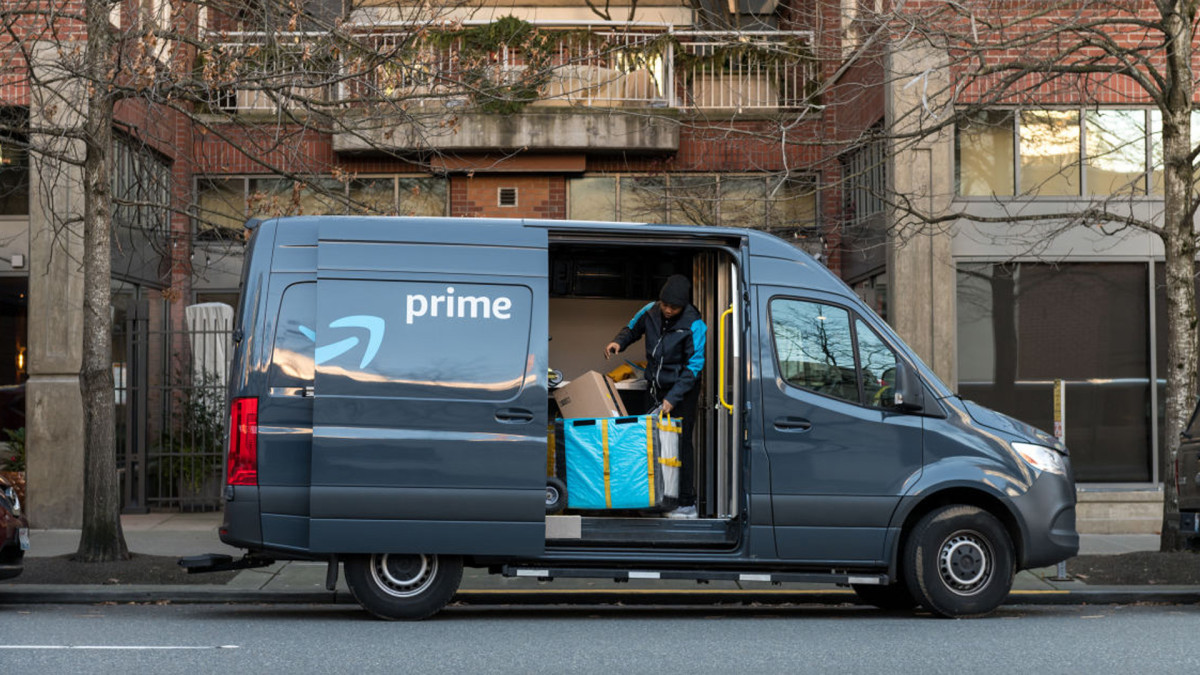Despite the headwinds, Amazon’s quarterly reports still read like a masterclass in scale meeting discipline.
The e-commerce behemoth’s growth engine continued humming, even with retailers elsewhere buckling under tariff pressures and consumer fatigue.
In the second quarter, Amazon reported sales of $167.7 billion, up 12% year-over-year, while operating income increased to 31%. Strength in core retail, third-party sellers, Amazon Web Services, and ads has effectively offset headwinds from higher import costs along with a jittery macro backdrop.
However, beneath the top-line resilience, there’s a quiet shift taking shape in how Americans shop. Inflation is moderating, yet caution hasn’t gone away, as tariffs test price elasticity and customers still edit their carts before checkout.
That’s exactly why Amazon’s latest consumer readout lands as more than just a company update. It’s essentially a mirror for the entire retail space, offering a firsthand look at how price-sensitive, promotion-weary shoppers are behaving ahead of the holiday season.

Image source: 400tmax/Getty Images
Shoppers tap brakes on Amazon deals as inflation bites
Amazon’s latest Prime Big Deal Days didn’t quite land with the vigor the company would’ve hoped for, which is worrying for the rest of retail.
According to Numerator, shoppers used the two-day event primarily to stock up on basics such as apparel, home goods, and household essentials instead of splurging on big-ticket items.
More Retail Stocks:
- American Eagle CEO addresses Sydney Sweeney ad outrage
- Costco just sweetened the deal for Executive members
- Amazon made a change to Prime shopping to take on Target, Walmart
Moreover, average order values tanked 15% from July’s Prime Day, and roughly 50% of all orders were under $20, with clear signs that consumers are still feeling squeezed from inflation and tariff-related pressures.
Despite 90% awareness, just 61% of July Prime Day shoppers returned in October, as satisfaction scores decreased to 58% from 66%. Analysts feel that the sharp pullback has less to do with Prime fatigue and more with economic fatigue.
Related: Nvidia CEO drops bombshell on 68-year-old chip giant
Tariff worries (cited by 48% of buyers) and circumspect sentiment have effectively pushed many toward price comparisons with other retail giants such as Walmart and Target, clipping away at Amazon’s promotional edge.
Just 23% of shoppers used the event to get a head start on holiday spending, a marked decline from 45% last year.This spells trouble for Q4, as retailers brace for a choppy holiday season.
Quick takeaways:
- Prime Day loses its punch: Shoppers are focusing on essentials, with average orders dropping 15% and roughly 50% under $20.
- Tariffs take a toll: Almost half (48%) of buyers pointed to tariff worries, pushing many to compare prices with stalwarts like Walmart and Target.
- Holiday caution ahead: Only 23% shopped early for holidays, pointing to a relatively slower and cautious Q4 for retail.
How Amazon’s efficiency playbook is blunting tariff pain
Tariffs became a fresh headwind for Amazon this year.
Early in the year, Washington pointed to higher import duties, especially on China, which sent shockwaves through the retail sphere. Amazon was quick to flag a “tougher business climate,” warning that trade friction could potentially impede consumer spending while feeding into margins.
Related: Nvidia-backed AI stock’s monster run gets CoreWeave jolt
For more color, its June-quarter guidance of $13 billion to $17.5 billion in operating profit came in below Wall Street estimates, linked to tariff uncertainty. CEO Andy Jassy admitted the outlook was murky: “None of us knows exactly where tariffs will settle or when.”
Nevertheless, it’s imperative to consider that Amazon’s potent retail engine held up, led by resilient demand and its reputation for low prices.
However, the exposure runs deep.
Nearly 25% of Amazon’s first-party inventory is sourced from China, which is over 50% higher than the U.S. retail average. That essentially makes tariff swings a real margin threat. Hence, for now, cost discipline, supplier diversification, and efficiency gains are critical in curbing the effects of tariffs on Amazon’s business.
Goldman Sachs, JPMorgan, and Morgan Stanley are still upbeat on Amazon, despite tariff uncertainty.
For instance, Goldman’s Eric Sheridan estimates that steep tariffs could potentially shave $5 to $10 billion off operating profit if fully absorbed, but acknowledged Amazon’s ability to offset cost spikes.
Similarly, JPMorgan’s Doug Anmuth said Amazon saw “no significant demand reduction” from tariffs in the first half of 2025. Additionally, Morgan Stanley’s Brian Nowak raised his price target for Amazon stock to $300, following the reduction of U.S.-China tariffs from 145% to roughly 55%, alleviating cost concerns.
Related: Palantir’s Pentagon dream just hit a classified snag
#Amazon #Prime #shoppers #warning #retailers